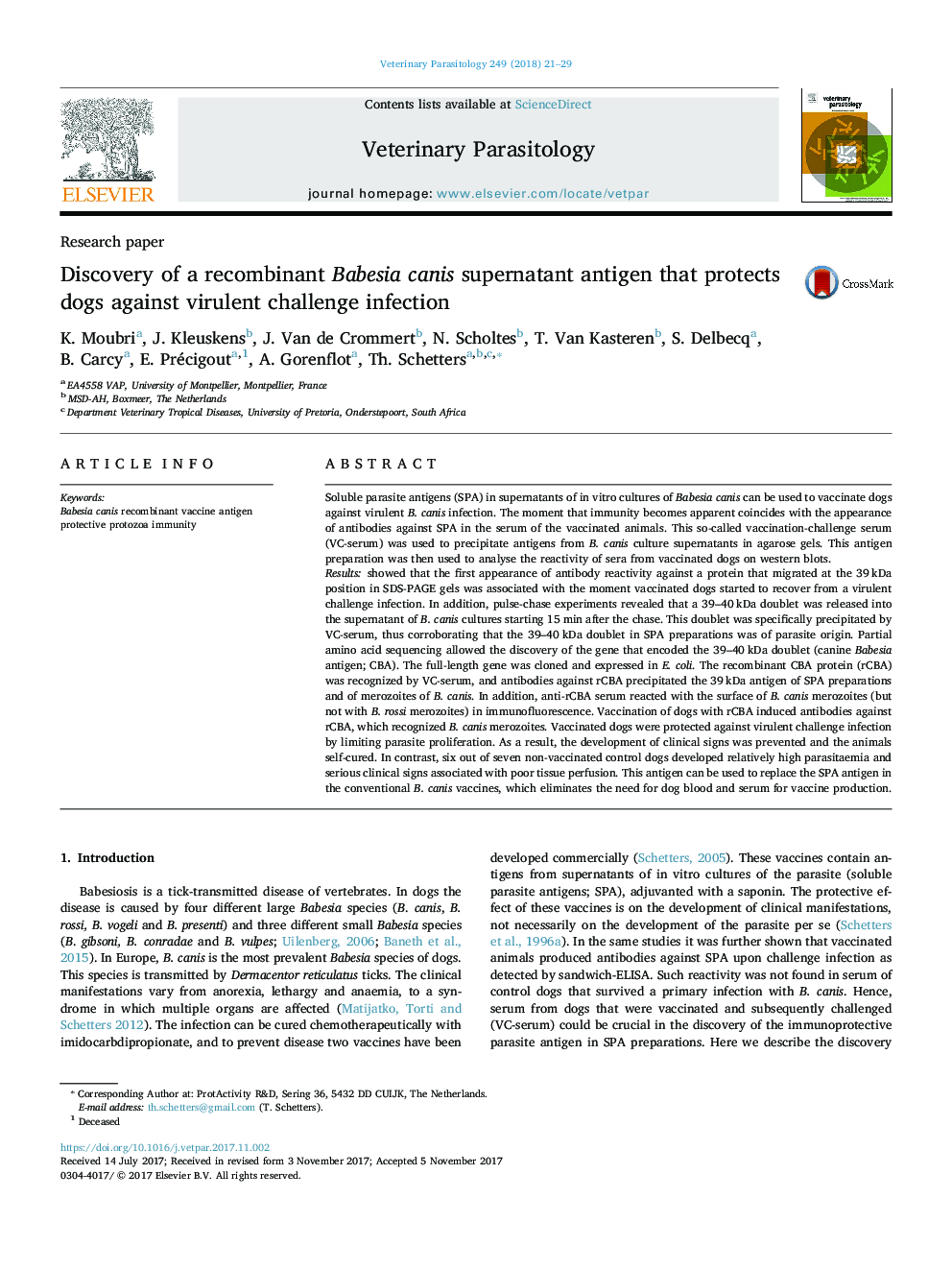| Article ID | Journal | Published Year | Pages | File Type |
|---|---|---|---|---|
| 8506161 | Veterinary Parasitology | 2018 | 9 Pages |
Abstract
showed that the first appearance of antibody reactivity against a protein that migrated at the 39Â kDa position in SDS-PAGE gels was associated with the moment vaccinated dogs started to recover from a virulent challenge infection. In addition, pulse-chase experiments revealed that a 39-40Â kDa doublet was released into the supernatant of B. canis cultures starting 15Â min after the chase. This doublet was specifically precipitated by VC-serum, thus corroborating that the 39-40Â kDa doublet in SPA preparations was of parasite origin. Partial amino acid sequencing allowed the discovery of the gene that encoded the 39-40Â kDa doublet (canine Babesia antigen; CBA). The full-length gene was cloned and expressed in E. coli. The recombinant CBA protein (rCBA) was recognized by VC-serum, and antibodies against rCBA precipitated the 39Â kDa antigen of SPA preparations and of merozoites of B. canis. In addition, anti-rCBA serum reacted with the surface of B. canis merozoites (but not with B. rossi merozoites) in immunofluorescence. Vaccination of dogs with rCBA induced antibodies against rCBA, which recognized B. canis merozoites. Vaccinated dogs were protected against virulent challenge infection by limiting parasite proliferation. As a result, the development of clinical signs was prevented and the animals self-cured. In contrast, six out of seven non-vaccinated control dogs developed relatively high parasitaemia and serious clinical signs associated with poor tissue perfusion. This antigen can be used to replace the SPA antigen in the conventional B. canis vaccines, which eliminates the need for dog blood and serum for vaccine production.
Related Topics
Life Sciences
Agricultural and Biological Sciences
Animal Science and Zoology
Authors
K. Moubri, J. Kleuskens, J. Van de Crommert, N. Scholtes, T. Van Kasteren, S. Delbecq, B. Carcy, E. Précigout, A. Gorenflot, Th. Schetters,
